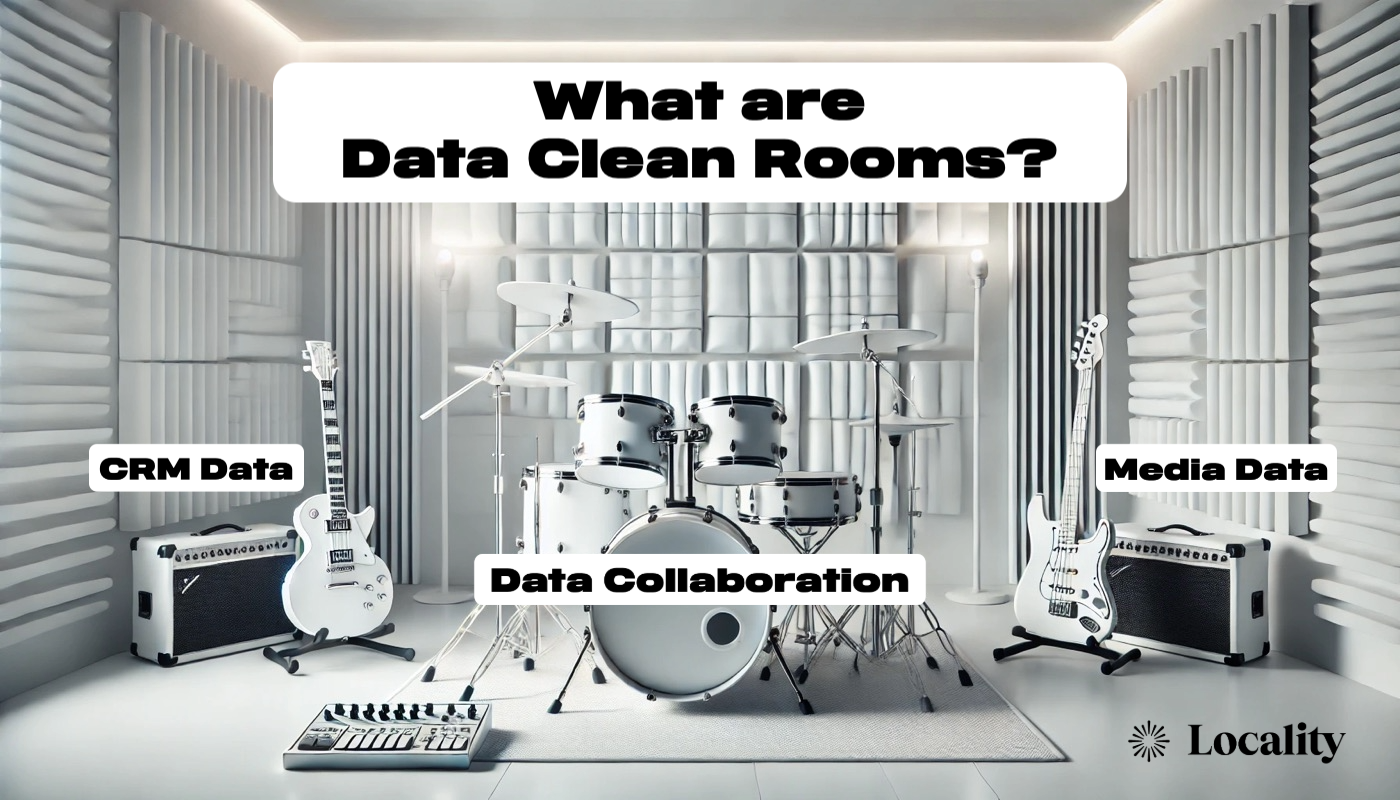In today’s fragmented media landscape, measuring the effectiveness of ad campaigns has become increasingly challenging. Enter Data Clean Rooms (DCRs), a revolutionary solution transforming how streaming video and digital media buying are conducted. By enabling privacy-compliant data collaboration, DCRs allow advertisers and streaming, digital video publishers to activate ad campaigns more efficiently and effectively, ensuring that sensitive data remains secure while delivering accurate and timely insights.
What are Data Clean Rooms (DCRs)?
Data Clean Rooms (DCRs) are secure environments where multiple parties can collaborate on data analysis without exposing sensitive information. These environments allow for the aggregation and analysis of data from various sources, ensuring privacy and compliance with data protection regulations. DCRs facilitate the sharing of anonymized data, enabling advertisers to gain deeper insights into their campaigns while maintaining the confidentiality of individual user data.
Steve Silvestri, Locality’s Head of Data Strategy & Innovation states, “As the media landscape becomes more fragmented, it is increasingly challenging for advertisers to measure campaign effectiveness. Next-gen data solutions and Clean Room environments are quickly transforming how participants in the media ecosystem can collaborate in a fast, effective, and privacy-compliant way.” Silvestri adds, “The key is ‘collaboration.’ Clean Rooms provide a welcoming security blanket and a new swim lane for the way data is managed, shared, and leveraged across the media landscape. They offer safeguards against exposing sensitive data as well as speed and efficiency compared to traditional methods of matching.”
Additionally, DCRs provide accurate and timely analytical insights (with far less latency than traditional methods), allowing marketers and streaming publishers to make smarter decisions faster, thereby maximizing ROI. For example, real-time matching of multiple data sources (i.e., broadcast viewership and streaming viewership) unlocks cross-platform insights that can be optimized accordingly, in-flight, using Automatic Content Recognition (ACR) Reach and Frequency data.
A game-changer vs. traditional data matching methods
DCRs are a game-changer compared to traditional data matching methods because they offer several key advantages:
- Improved Privacy Compliance: DCRs ensure that data collaboration occurs in a privacy-compliant manner, protecting sensitive information and adhering to data protection regulations
- Speed and Efficiency: DCRs enable faster data matching and analysis, reducing latency and allowing for real-time insights
- Enhanced Analytics: DCRs help promote the union of multiple data sources providing comprehensive analytics
- Data Accuracy: DCRs aid in data resolution by improving accuracy and eliminating inconsistencies, ensuring higher quality campaign insights
These benefits make DCRs an optimal choice for enhancing advanced advertising tactics, in today’s complex media environment.
How can DCRs help local video advertisers enhance data-driven campaigns
DCRs can help local video advertisers unlock valuable audience insights and activation tactics:
- Privacy Compliance: Ensures all data is protected, secured, and privacy compliant. Unlocks and opens the door to new data participants, applications and marketing use cases
- Aggregating Data: DCRs foster data collaboration and allow for various data signals to be unified. This enables more effective measurement solutions across streaming video and broadcast TV to scale at the local level. Advertisers can garner insights into how their campaigns perform cross-platform for more efficient media allocations
- Real-Time Insights: With real-time data matching, advertisers can analyze and optimize their campaigns, ensuring maximum effectiveness and improving ROI
What can DCRs do and what can’t they do
From national and regional brands to SMBs, Clean Rooms are proven to accelerate local advertising efforts, but they can’t solve for everything. “Data Clean Rooms excel in privacy-compliant data collaboration, eliminating intermediaries for direct data matching, and providing enhanced analytics with speed and accuracy,” Silvestri explains. “However, participation in DCR collaboration may require some initial heavy lifting and resources. Organizations must adapt and shift from their current data structure and standards, updating their external data agreements.”
What DCRs Can’t Do:
- Initial Setup: DCRs may require a significant initial investment in terms of data standards and structures
- Data Sharing Agreements: Implementing DCRs may necessitate changes to existing data sharing agreements to ensure transparency and compliance
- Confusion with Other Tools: DCRs can sometimes be confused with other next-gen data tools, such as AI and machine learning applications, although many DCR vendors offer some level of AI services.
Best practices when implementing DCRs
Silvestri advises, “To effectively leverage Data Clean Rooms, it’s crucial to asses current data architecture and properly evaluate the initial investment and external / internal resources required. Start small, prioritizing and managing use cases to scale investments efficiently.”
- Re-align and Invest: Invest in or re-align resources to support efforts
- Update Data Agreements: Establish new or proactively refresh data agreements with participating partners to ensure interoperability and use cases
- Start Small: Identify priorities and introduce use cases gradually to manage and scale tech investment effectively.
- Privacy Compliance: Ensure that all data collaboration and evaluation processes adhere to privacy regulations.
By following these best practices, local video advertisers can effectively implement cross-media measurement, intelligently view campaign attribution, and maximize the benefits of Data Clean Rooms.
Key takeaways
Data Clean Rooms are revolutionizing streaming video and digital media buying by enabling privacy-compliant data collaboration, allowing advertisers and publishers to activate ad campaigns more efficiently and securely. These secure environments aggregate and analyze anonymized data from multiple sources, providing deeper insights while maintaining compliance with evolving privacy standards and best practices. DCRs offer significant advantages over traditional methods, including enhanced analytics, speed, efficiency, and data interoperability. However, they may require an initial investment in proper resources, updated data agreements, and shifting away from legacy data practices.
Steve Silvestri, Head of Data Strategy & Innovation, Locality
Steve Silvestri leads Locality’s data strategy and innovation, focusing on advanced data solutions and partnerships to help brands effectively connect with local audiences and boost ad engagement across multiple video platforms.



